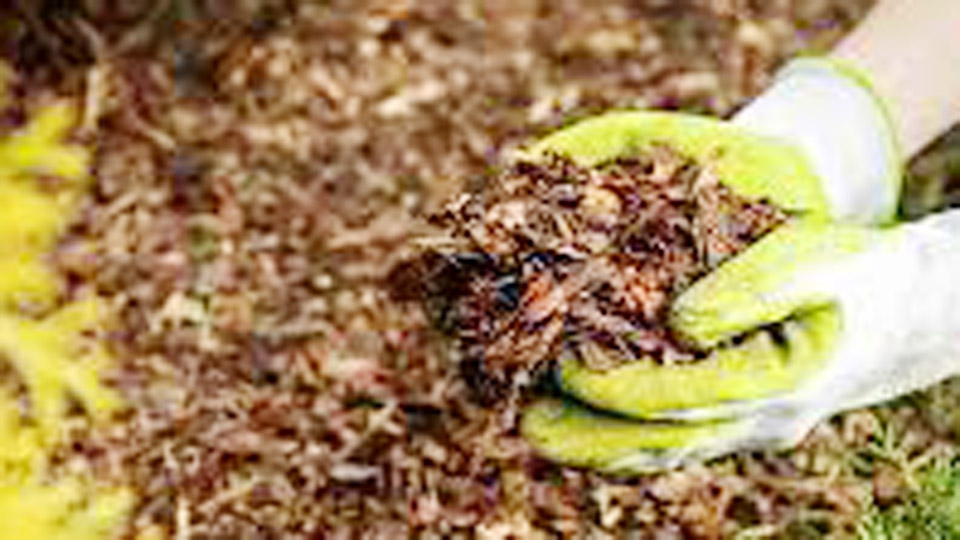Mulching is one of those gardening practices that can completely transform the way your yard or garden looks and functions. If you’re like me, always on the lookout for ways to make your garden healthier, more vibrant, and easier to maintain, then mulching is a game-changer. When I first learned about it, I was surprised by how something so simple could bring such significant benefits.

Image by landscapeimprove
Mulching isn’t just about spreading materials over the soil. It’s about protecting your plants, conserving resources, and improving the overall health of your garden. Let me walk you through everything you need to know about mulching and its advantages.
What is Mulching?
Mulching involves covering the surface of the soil with a protective layer of material. This material, known as mulch, can be organic or inorganic. The primary goal is to retain moisture, regulate soil temperature, and reduce weed growth, but mulching can do much more than that.
When I first started mulching, I used shredded leaves from my yard. It amazed me how quickly I noticed the difference—fewer weeds, better soil texture, and even healthier plants. That’s when I realized mulching isn’t just for professionals; it’s for anyone who wants a thriving garden.
Types of Mulch
Mulch comes in two main categories: organic and inorganic. Each type has its own set of benefits, and the choice depends on your garden’s needs.
Organic Mulch
Organic mulches are made from natural materials that decompose over time, adding nutrients to the soil.
- Examples: Wood chips, straw, bark, grass clippings, compost, shredded leaves.
- Best For: Flower beds, vegetable gardens, and areas where soil improvement is a priority.
Inorganic Mulch
Inorganic mulches are materials that don’t decompose quickly. They are typically used for aesthetic purposes or to provide a long-lasting solution.
- Examples: Gravel, pebbles, black plastic, landscape fabric, rubber mulch.
- Best For: Decorative landscaping, pathways, and areas where long-term weed control is needed.
Advantages of Mulching
Now that you know what mulching is, let’s dive into the benefits. I’ve personally experienced most of these, and trust me, they make a huge difference in maintaining a healthy, beautiful garden.
Moisture Retention
Mulch helps retain moisture in the soil by reducing evaporation. This is especially helpful during hot summers or dry spells. With a good layer of mulch, I’ve found myself watering less frequently, which saves both time and water.
Weed Control
One of my least favorite gardening chores is pulling weeds. Mulching creates a barrier that blocks sunlight, preventing weeds from sprouting. While it doesn’t eliminate them completely, it significantly reduces their growth.
Temperature Regulation
Mulch acts like a natural blanket for your soil. In the summer, it keeps the soil cool by reducing heat absorption. In the winter, it insulates the soil, protecting roots from freezing temperatures. I’ve noticed my perennials bouncing back stronger after winters with a good mulch layer.
Improved Soil Health
Organic mulch breaks down over time, adding essential nutrients and improving soil structure. My vegetable garden has never been healthier since I started using compost and shredded leaves as mulch.
Erosion Prevention
If you live in an area prone to heavy rain or wind, mulch can help prevent soil erosion. It keeps the topsoil intact and ensures that nutrients aren’t washed away.
Pest Control
Certain types of mulch, like cedar or pine, have natural insect-repelling properties. This has been a lifesaver for me, especially with pesky garden pests.
Aesthetic Appeal
Let’s not forget how mulch can enhance the look of your garden. Whether it’s the earthy tone of wood chips or the sleek appearance of black gravel, mulch adds a polished, professional touch.
How to Mulch Properly
Mulching might seem straightforward, but there are a few tips to get the most out of it. Here’s what I’ve learned from experience.
Choose the Right Mulch
Pick a mulch that suits your garden’s needs. Organic mulches are great for gardens that need nutrient boosts, while inorganic mulches are better for decorative purposes or pathways.
Apply the Right Amount
Too little mulch won’t provide the benefits, and too much can suffocate your plants. A layer of 2-4 inches is usually ideal.
Keep Mulch Away from Plant Stems
Avoid piling mulch directly against the stems or trunks of your plants. This can trap moisture and cause rot. Leave a small gap to allow air circulation.
Replenish as Needed
Organic mulch breaks down over time, so you’ll need to add more periodically. I usually refresh my mulch once or twice a year.
Common Materials Used for Mulching
If you’re wondering which materials to use, here’s a quick rundown of some popular options and their pros and cons:
| Material | Pros | Cons |
|---|---|---|
| Wood Chips | Long-lasting, aesthetic, and nutrient-rich | Can attract pests if over-applied |
| Straw | Lightweight and excellent for vegetable gardens | Breaks down quickly |
| Shredded Leaves | Free and nutrient-rich | Can mat together if too wet |
| Grass Clippings | Abundant and adds nitrogen | Can become slimy and smelly |
| Gravel | Durable and decorative | Does not improve soil health |
| Black Plastic | Excellent weed control | Can overheat soil in summer |
Where to Use Mulch
Mulch can be used almost anywhere in your garden. Here are some specific areas where it works wonders:
- Flower Beds: Adds a decorative touch while preventing weeds and retaining moisture.
- Vegetable Gardens: Improves soil health and regulates temperature for better yields.
- Trees and Shrubs: Protects roots and conserves water.
- Pathways: Inorganic mulch like gravel provides a clean, durable surface.
Mistakes to Avoid When Mulching
Even though mulching is simple, there are a few common mistakes that can reduce its effectiveness.
Over-Mulching
Applying too much mulch can suffocate roots and create an environment for pests. Stick to a 2-4 inch layer.
Ignoring Soil Preparation
Mulch works best on healthy soil. Before applying mulch, loosen the soil and remove weeds.
Using the Wrong Mulch
Not all mulches are suitable for every garden. For example, using gravel in a vegetable garden can hinder plant growth.
My Personal Experience with Mulching
When I first started gardening, I didn’t pay much attention to mulching. But after dealing with endless weeds and struggling to keep my soil moist, I decided to give it a try.
I started with shredded leaves and later experimented with wood chips and straw. The results were incredible. My garden was healthier, my plants were happier, and I spent less time on maintenance.
One of the most noticeable changes was in my vegetable garden. The tomatoes, in particular, thrived under a layer of compost mulch. They were juicier and more abundant than ever before.
Conclusion
Mulching is a simple yet powerful way to improve your garden’s health and appearance. Whether you’re a seasoned gardener or just starting out, adding a layer of mulch can save you time, water, and effort while giving you better results. It’s one of those practices where the benefits far outweigh the effort.
If you haven’t tried mulching yet, I highly recommend giving it a shot. Start small, experiment with different materials, and see how it transforms your garden. Trust me, once you see the difference, you’ll wonder why you didn’t start sooner.
FAQs
What is the purpose of mulching?
Mulching helps retain soil moisture, suppress weeds, regulate temperature, and improve soil health.
Can I use grass clippings as mulch?
Yes, grass clippings are an excellent mulch, but use them sparingly to avoid a slimy, compacted layer.
How often should I mulch?
Replenish organic mulch once or twice a year, depending on how quickly it decomposes.
Is inorganic mulch good for gardens?
Inorganic mulch is great for decorative purposes and long-term weed control but doesn’t improve soil health.
What’s the best mulch for vegetable gardens?
Compost, straw, and shredded leaves are some of the best mulches for vegetable gardens.

I’m Marissa Lynn, the proud author behind GardeningProperty.com! With a deep-rooted passion for all things green and growing, I’ve dedicated years to mastering the art and science of gardening.
From nurturing vibrant flowerbeds to cultivating thriving vegetable gardens, I love sharing practical tips, creative ideas, and proven techniques to help others create their dream outdoor spaces.